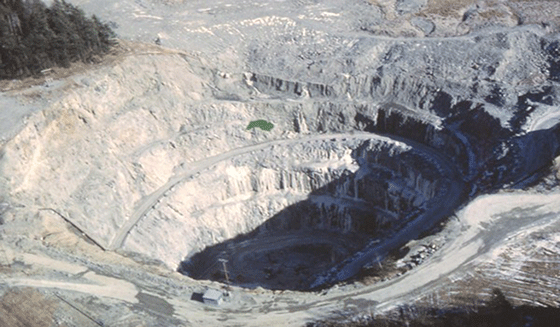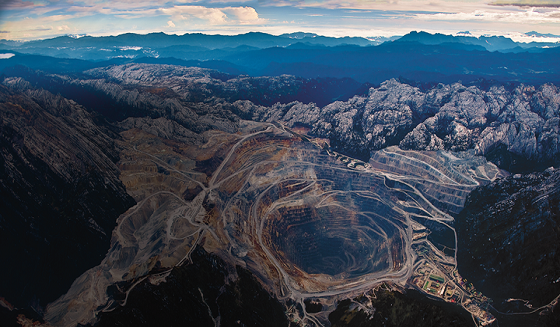Iran Drifts to Non-Oil Based Sectors

The world’s 10 wettest mines
December 22, 2015
Features:Installation of the latest version of Heavy Media(DMS)
December 27, 2015
Iran Drifts to Non-Oil Based Sectors, Mining Sector to Get Impetus, Non-Petrochemical Manufacturing Exports are Expected to Touch USD 60 Billion by 2025.
With a fall in oil prices, the Iranian Government’s attention has drifted away from an oil-based economy. The Government’s approach is to boost the mining sector within the next five years in the 6th Development Plan. Over 68 diverse minerals and 27+ billion tonnes of explored reserves as well as 57 billion tonnes of potential reserves have placed Iran among the world’s top 15 mining countries. However, such potential is not adequately positioned in the economy. Currently, the mining sector accounts for less than 1% of total GDP and relevant downstream industries do not exceed 5%.
Iran plans to boost investment in exploration, mechanised exploitation, as well as mid-stream and down-stream projects to enhance sustainable development. The target is to increase the mining’s current GDP share from less than 1% to more than 2%, and relevant downstream industries from 5% to 20% within next ten years (2015-2025). This requires mining and relevant industries to grow at 10-12% per annum.
“The boom in the mining sector will help the Iranian Government reduce the unemployment rate and raise non-oil revenues significantly. The Iran 2025 Outlook initiative calls for greater domestic value-adding activities with the aim to reduce the amount of raw minerals exported from the country. This programme is expected to require significant imported technology and participation of foreign partners,” said Ali Mirmohammad, Senior Consultant and Business Development Manager – Iran, Frost & Sullivan.
In the post-sanction era, the country has charted a strategic 10-year plan to boost mining exports to USD 6 billion from USD 1.5 billion in 2015. These mainly include new reserves of raw materials whose processing in-country is not feasible. Furthermore, all manufacturing exports (excluding petrochemical products) are expected to increase from USD 15 billion to USD 60 billion by the end of 2025, if all barriers are lifted.
Iran intends to attract over USD 20 billion of foreign investment in mining and downstream industries once the sanctions are lifted, said the Deputy Minister and Chairman of the Executive Board of Iranian Mines & Mining Industries Development & Renovation (IMIDRO), Mehdi Karbasian at the International Mining And Resources Conference (IMARC) Australia. IMIDRO is the state-owned holding mining company that governs and allocates budgets, makes policies and owns the largest strategic mining companies in Iran.
IMIDRO has welcomed foreign investors and technology providers to complete over USD 29 billion investment projects, USD 9 billion of which currently are under implementation. IMIDRO is strongly looking for new explorations up to nearly 300,000 square kilometers to supply required materials for downstream projects, said Salman Nasr, the International Relations officer of IMIDRO. Exploration of new reserves in copper and poly-metals, phosphate, nickel, raw material for aluminium production, iron ore and precious and semi-precious stones are key investment priorities in the country.
“To encourage foreign investments, IMIDRO has set up initiatives such as providing right of exploitation of mines up to 25 years and some incentives like tax exemptions. Establishing more free investment zones is another policy, which is followed by IMIDRO,” Ali noted.
Moreover, a mining Special Economic Zone is under construction to serve the metals and minerals industries. Two million tonnes of aluminium, 10 million tonnes of crude steel, one million tonnes of magnesium, and 1.6 million tonnes of alumina are the major investment opportunities in this economic zone. New investments in graphite electrodes, titanium slag and ilmenite concentrate, calcined petroleum coke, coal washing, aluminum alloy ingots, alumina from bauxite, iron-ore concentrate and pellet, alloy steel, hot-rolled steel and cold plate, magnesium lithium alloy, and coal powder are some key mid-stream opportunities in Iran.
Besides the above investment opportunities, the Government is also keen on partnership of the private sector with foreign companies for cost reduction strategies for iron-ore exploitation, renovating obsolete technologies and increasing safety levels, optimising train loading and unloading operations as well as engineering and consultancy in exploration and exploitation of newly discovered reserves. Privatisation and developing mining industries in less developed regions across the country is another key policy in the 6th Development Plan.
Ms. Homa Gousheh, chairwoman of the Association of Banking & Credit Investment Consultants, remarks, “Project financing is a key constraint in Iran which has currently halted many proposed investments, especially in metals and minerals sector in the country. To boost investments, fueling foreign resources into the country is vital. Iran supports foreign investment against expropriation or nationalisation under the Foreign Investment Promotion and Protection Act (FIPPA) and also allows investors to transfer the principal and interests of foreign capital or any portion of the capital remaining in the country abroad post deduction of taxes, duties, and legal reserves.”
While sanctions still not lifted, Iran has received huge interest on its mining projects from 16 mining companies across the globe like Rio Tinto and BHP Billiton. Despite instabilities in the business environment due to the current political and economic situation, Iran remains a lucrative market – not just because of its vast hydrocarbon resource base, but also because of its desire to become the region’s top technological and economic power house.
As a conclusion, Iran’s mining industry value chain requires new investments of approximately USD 60 billion. To strengthen its strategic position in the region, Iran needs to diversify the economy from oil and gas and enhance economic growth as well as sustainable development through alternate resources like mineral reserves. Empowering downstream industries to reduce the amount of raw material export is a key success factor that can boost the non-oil based economy in the country. It is the time for Iran’s Mines and Mining Industries to present capabilities, potential and investment opportunities as fast as possible in order to compensate for its decade of deprivation in the global market. Iran has got many opportunities for investors and metallurgical companies such as cheap energy, skilled educated manpower, plenty of Iron ore mines as raw material supply, and a huge domestic market demand. Beside these factors strategic geographical location and huge export potentials makes it an attractive and unique market in MENA and worldwide.
Source: Business Wire India


